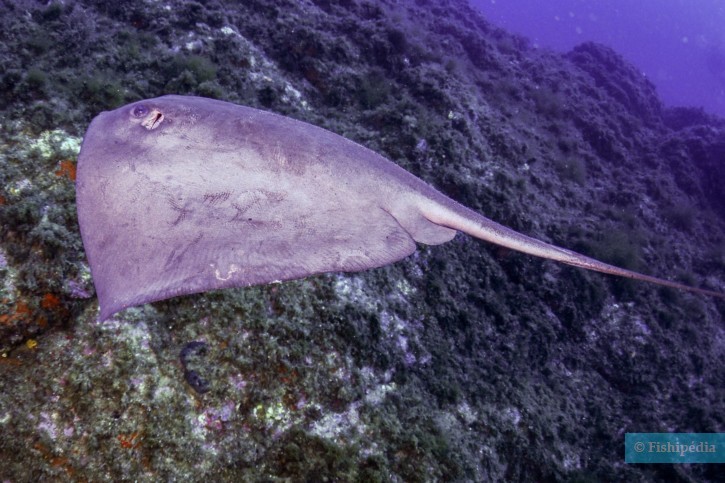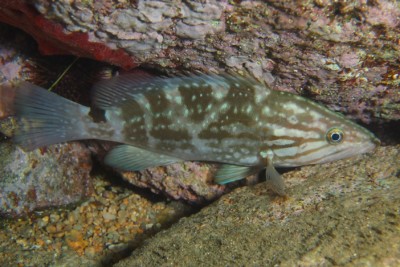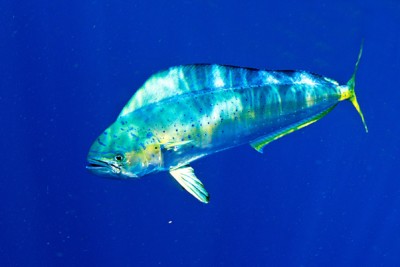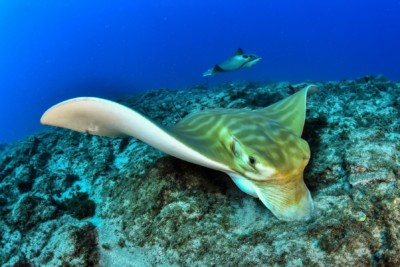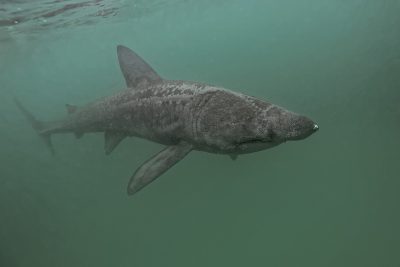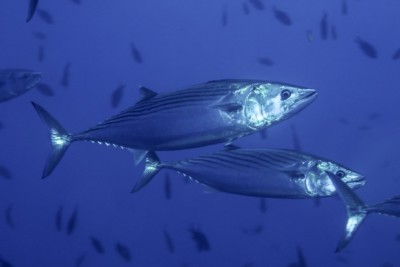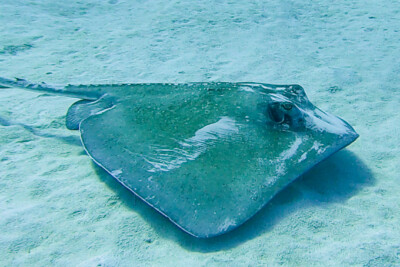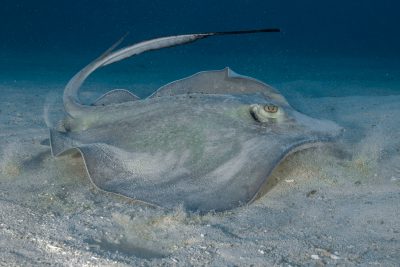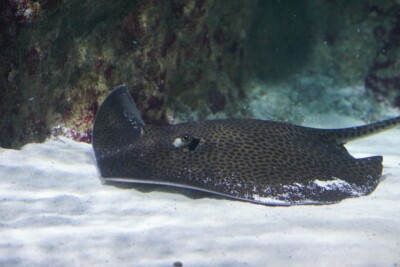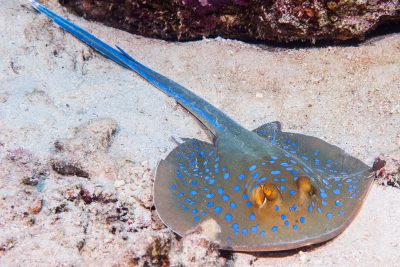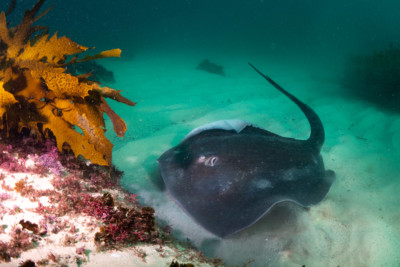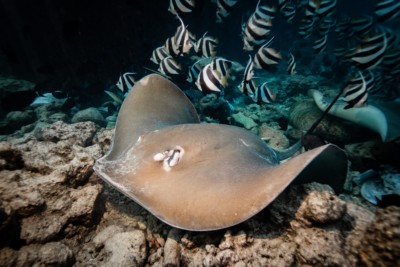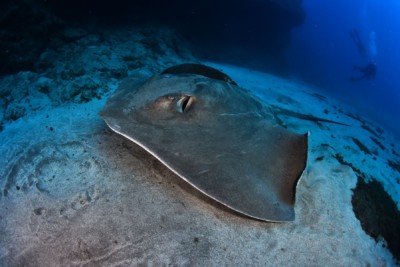pelagic stingray
| Scientific name | Pteroplatytrygon violacea |
|---|---|
| Descriptor | Bonaparte |
| Year of description | 1832 |
| IUCN category (World) | LC |
| Family | Dasyatidae |
| Genus | Pteroplatytrygon |
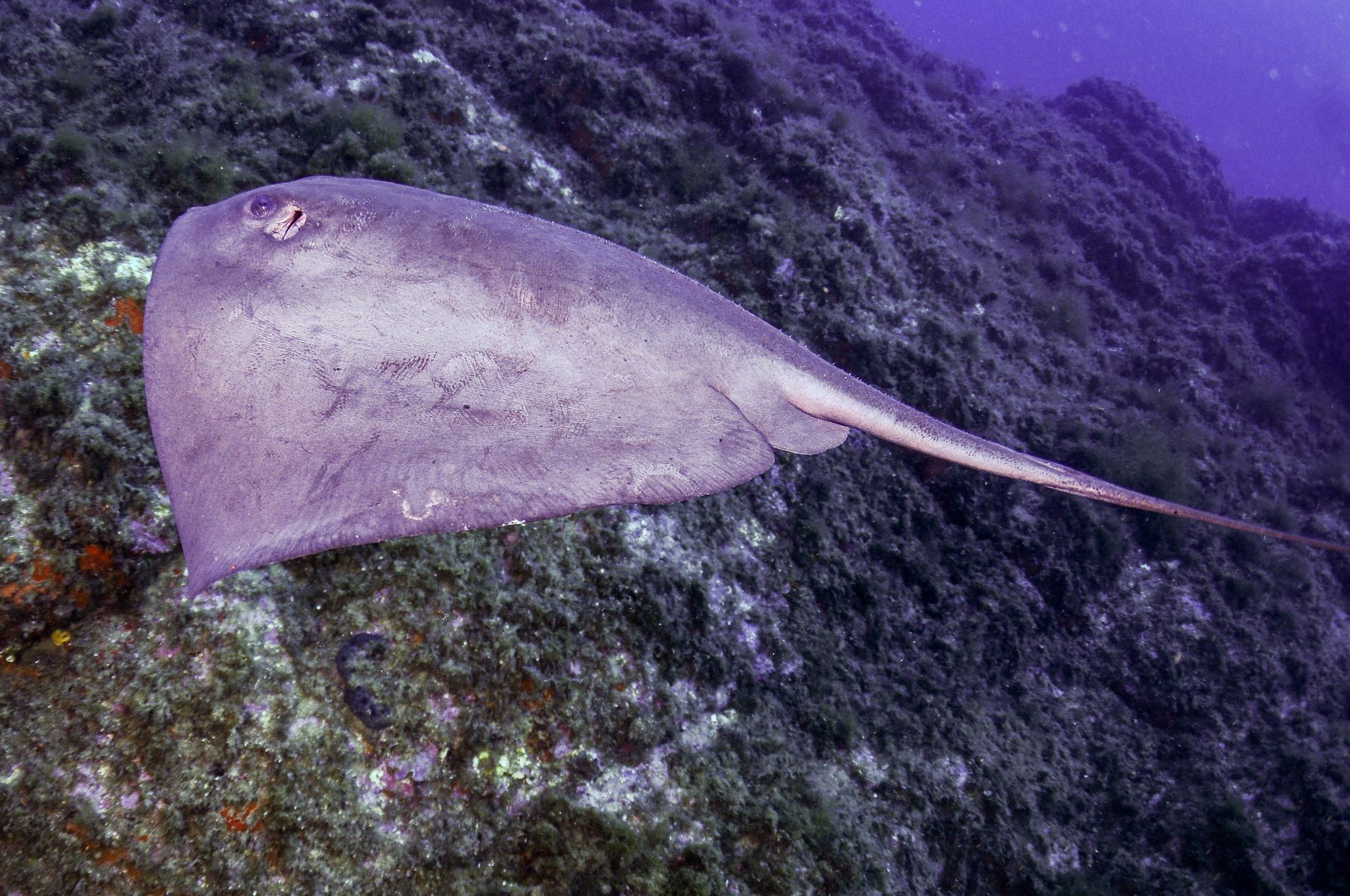

Introduction
Pteroplatytrygon violacea, commonly known as pelagic stingray, is a salt water fish.
This sheet is currently being prepared. The texts currently proposed come from our data model or are being drafted. To request priority for this content, you can write to us HERE.
Who is it?
Morphology
-
Type
-
Average size80 cm
-
Maximum size100 cm
-
ShapeCircular
-
Type
-
Average size80 cm
-
Maximum size100 cm
-
ShapeCircular
How to recognize This fish ?
The pelagic stingray measures between 80 and 100 cm. This fish is unicolore with a predominantly violet body.
Behaviour & Life cycle
-
dietcarnivorous
-
Sociabilitysolitary
-
territorialNo
-
Way of livingdiurnal
The pelagic stingray is a fish solitary naturally found mid-depth and near surface. This species is carnivorous .
n general, this species does not care much about other animals crossing its path.
Reproduction
-
Reproductionovovivipare
The pelagic stingray is a fish ovovivipare.
Risks for humans
-
VenomousYes
This species is venomous and can cause serious injuries when touched.
What to do in the event of a sting?
in case of sting, the following rules should be followed, in this order:
- Isolate the victim from the danger and quickly remove him or her from the water
- Call for help
- Lay the victim down in a half-sitting position and avoid any effort
- Immobilize the affected limb
- Clean the wound
- The venom of this species being thermolabile, it can be neutralized if it is submitted to a temperature of about 45 °C. It is therefore possible to heat the wound. This popular technique should be practiced with great care so as not to aggravate the wound by burning it. It is advisable to immerse the affected limb in hot water.
- If the puncture is too deep, heating the wound will be less effective.
Sometimes the sting can cause discomfort or even loss of consciousness in the victim. The stings are usually very painful.
Origin and distribution

What is its habitat?
Natural environment characteristics
-
Depth1 - 381 m
-
EnvironmentActive pelagic
Biotope presentation
The pelagic stingray is most often found at a depth between 1m and 381m. However, it is not impossible to find this species at other depths.
Species of the same biotope
To go further
Sources & Contributions
Participation & Validation
The Fishipedia team and specialist contributors are committed to providing high-quality content. However, although the information comes from scientific sources or testimonials from specialists, the cards may contain inaccuracies.

Benoit Chartrer

Aurélien Calas
Translation
Translation done with the valuable contribution of our translators, who make this information available to a wider audience. We sincerely thank them for their commitment.
Scientific partners
Tags
#Dasyatidae
#Pteroplatytrygon
#plein eau
#Ray
#Bay of Bengal
#Gulf of Mexico
#Persian Gulf
#Great Barrier Reef
#mer d'Oman
#East China Sea
#Tasman Sea
#Caribbean Sea
#Philippine Sea
#Sea of Japan
#Mediterranean Sea
#Black Sea
#Red Sea
#South East Asian Seas
#Indonesian seas
#Atlantic Ocean: North Coast of Brazil
#Océan Atlantique Est Afrique - Angulhas
#Temperate Eastern Atlantic Ocean
#Océan Atlantique Est Afrique - Transition & Cap Vert
#Eastern Cold Atlantic Ocean
#Gough Island
#Saint Helena
#Cold temperate Northwest Atlantic Ocean
#Northwest warm temperate Atlantic Ocean
#Southwest warm temperate Atlantic Ocean
#Southwest Tropical Atlantic Ocean
#western Indian Ocean
#Desventuradas Islands
#Galapagos
#Océan Pacifique Nord Est Tempere Chaud
#Océan Pacifique nord-est tempéré froid
#Océan Pacifique sud-est tempéré chaud
#Tropical Eastern Pacific
#Western Tropical Pacific Ocean
#Corsica
#Canary Islands
#Sardinia
#Sicily
Species of the same family
Species of the same biotope
